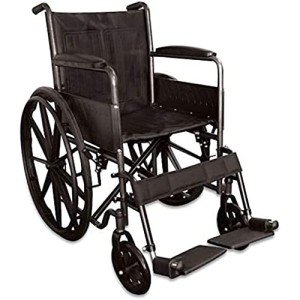How Bariatric Wheelchair 24 Inch Seat Has Become The Most Sought-After Trend Of 2024

Bariatric Wheelchair Seat Width
Seat Width
Having the right seat width is necessary to wheelchair users who spend longer durations in their chairs. Too narrow a seat will cause pressure on the hips and thighs which might lead to sores or pressure points. Having too wide a seat can likewise make it challenging for the user to reach the hand rims to move themselves or maneuver in small areas.
To measure the proper seat width an individual would rest on a chair normally and have their measurement taken throughout their lap at the best point which is generally their hips. A wheelchair determining tape can be used to measure this, but a lawn stick is chosen as it prevents individuals from covering the tape around their hips which would give an unreliable result.
The standard wheelchair seat width is 16" (narrow adult), 18" (standard adult), and 20" (large adult). For bariatric patients, a 24" seat is readily available. This heavy-duty extra wide bariatric wheelchair from Medline includes swing-away footrests, a carbon steel frame with rust- and chip-resistant chrome plating, and easy-to-clean vinyl upholstery. It has a weight capacity of 500 pounds.
Seat Depth
Generally, the seat depth of a bariatric wheelchair was added 2" to the measurement taken at the user's widest point (usually their hips). This was indicated to accommodate extra layers of clothes that may be worn during cold weather. However, this practice is becoming less typical as wheelchair users have the ability to spend more time inside your home and are not wearing long coats. This makes the seat depth of a chair less important when selecting a bariatric wheelchair. However, it is still important to select an alternative that uses adequate assistance for bigger users.

The Medline folding extra broad bariatric manual wheelchair includes a comfortable 24" seat width and a heavy-duty slide tube silver vein frame. It likewise has an adjustable axle and tool-free elevating legrests.
lightweight bariatric transport wheelchair
When it comes to identifying the proper wheelchair seat width you ought to constantly measure from the user's best point which is normally their hips. You will likewise need to think about whether the user is going to be wearing a winter coat as this may add 2" to the width required.
When a wheelchair remains in usage it must only be run on level surface areas with the wheel locks fully engaged. This is to avoid the chair from having the ability to move inclines that are 10 degrees or higher. It is also essential to bear in mind that any activity that may shift the center of gravity in the chair need to be made with care. This consists of grabbing items that require the person to lean out of their seat or trying to stand from it.
Whenever you have the chair in use it is suggested that you regularly inspect it for damage and lubricate any areas that are considered required. For example, the casters need to be lubed by removing the caster fork and using a multi-purpose grease to apply to the caster stem bearings. Likewise, the foot plates can be changed by loosening the bolt and then moving them to the wanted position. This allows the feet to sit comfortably on the footplate and avoids any pressure points from forming. This can be extremely uncomfortable for the user and if left ignored, can lead to pressure sores.
Weight Capacity
Bariatric wheelchairs are developed to support more weight than standard wheelchairs. This makes them tougher and much better geared up to deal with falls. They are likewise usually larger and wider, making them less maneuverable in tight areas than basic wheelchairs. They require automobiles with unique ramps and lifts to load them, along with motorists who understand how to finest transport them from one area to the next.
When selecting a wheelchair, consider its weight capacity as it will be the main determining element in whether it will accommodate your traveler's requirements. The weight capacity of the chair is often noted as a fixed load, suggesting that it indicates the quantity of weight the chair can conveniently hold while standing still. Nevertheless, some producers also note an active load that is based on a drop test and can simulate the result of someone taking a seat in the chair. This may be a more trustworthy measurement of the weight limit, depending on your needs.
If you plan to perform activities that shift your center of gravity in the seat (such as grabbing objects), be sure to have front casters pointed in a forward direction and wheel locks engaged so the chair will not tip over. Likewise, examine that casters are lubricated frequently to avoid extreme wear and abrasions. The lubrication procedure includes getting rid of the fork, separating the caster from the wheel, and greasing the caster stem bearings with premium multi-purpose grease.
